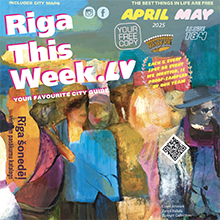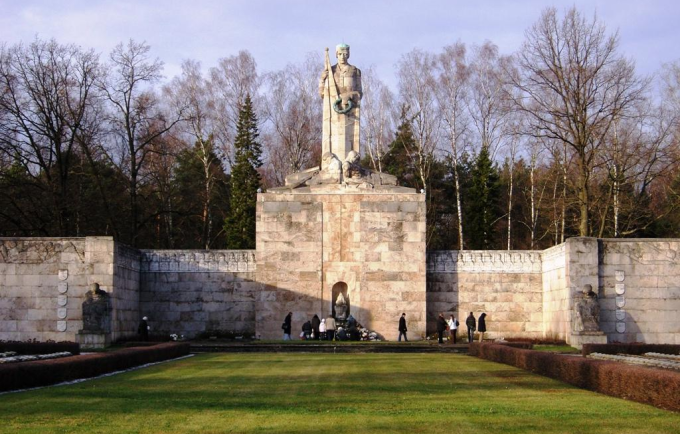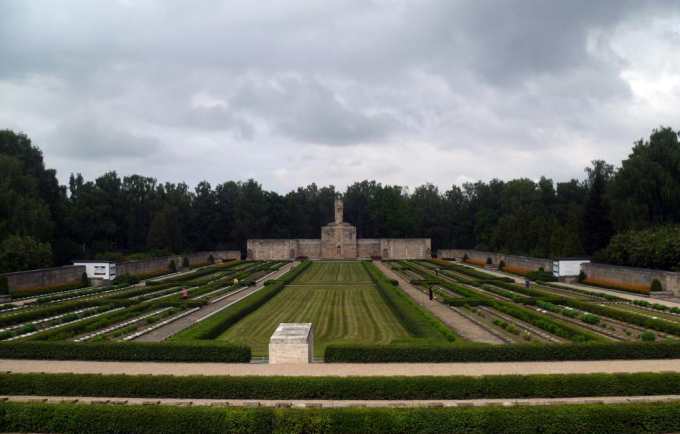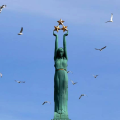
In 1913 the Forest Cemetery was opened. In 1914 Riga Cathedral and St. Peter's church set aside a parcel of land for 146 burials of soldiers who did not belong to any congregation of Riga in the part of the cemetery intended for the dead from their congregations. The first soldiers buried there, on 15 October 1915, were Andrejs Stūris, Jonas Gavenas and Jēkabs Voldemārs Timma. As the war continued it became clear that land for more burials will be needed. The organization committee of Latvian Riflemen battalions turned to the churches for more land, but the request was denied. The committee then turned to Riga City Council, which had alloted the land for cemetery, arguing that reasons for refusal the churches had named were questionable and unreasonable in the time of war. The conflict was ultimately solved in 1916 by the churches agreeing to return part of the land to the city for formation of separate cemetery, which in turn allotted it to the committee.[1][2] The initial outlay of the cemetery was designed by Andrejs Zeidaks, then the head gardener of the city. In 1920 a committee for overseeing cemeteries and battle fields from World War I was formed, which became responsible for the development of the Brothers' Cemetery.[3] The development of the memorial can thus be roughly divided into two periods. First was the period of landscape development, which lasted until 1923, when the landscaping was developed according to Zeidaks' ideas. Meanwhile the architectonic and artistic development of the cemetery was being discussed. In 1921 and in 1922 two closed design contests took place. The sculptor Kārlis Zāle, who was visiting Riga to participate in the design contest for the Freedom Monument, was invited to take part in the second contest for the cemetery as well. He won, and the second phase of development began, which lasted until 1936. In this period the landscaping was supplemented by architectonic and sculptural elements to form a unified ensemble in accordance with Zāle's design. The architectural works were directed by P. Feders; the architect A. Birznieks and the sculptors M. Šmalcs, N. Maulics and P. Banders were also involved.
The foundation stone of the memorial was laid on 18 November 1924. The first sculptural group, of dying horsemen, was unveiled on 20 November 1927, the second on 2 September 1928. The sculpture of Mother Latvia and her dead sons was unveiled on 13 October 1929. Construction of the main gates began in 1930. Statues of soldiers with shields symbolizing the four regions of Latvia were carved later. In 1936 the coats of arms of the 19 districts and the 59 cities of Latvia were carved in the wall of the cemetery. The cemetery was formally dedicated as a memorial on 11 November 1936 in the presence of the then President of Latvia and the government.







